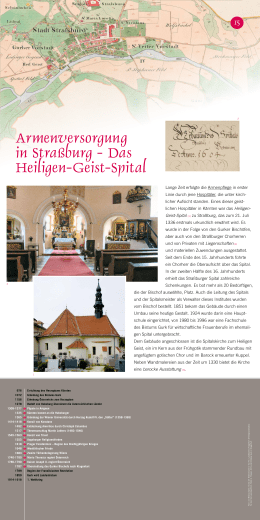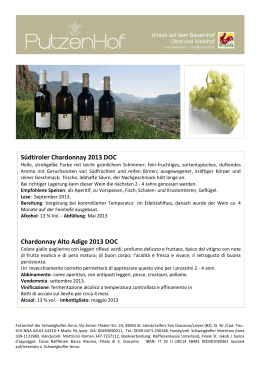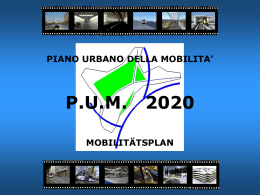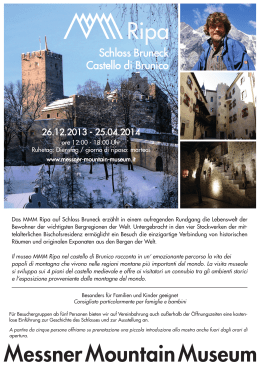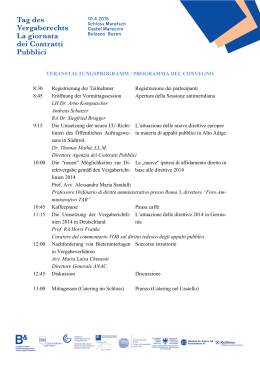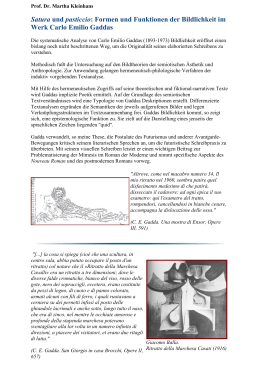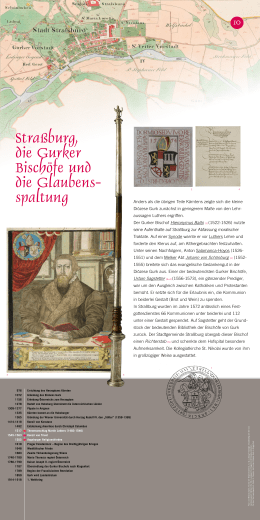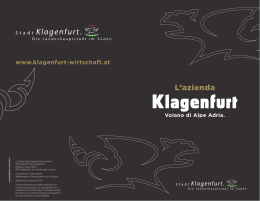13 Glaubensleben in der Neuzeit Das katholische Glaubensleben in der Neuzeit zeigt sich geprägt durch die vom Trienter Konzil (1545-1563) angeregte katechetische Unterweisung. Mit Christenlehren [1+2] und Volksmissionen suchte man den Gläubigen gesicherte Kenntnis des katholischen Glaubens [3] zu vermitteln. Diese beiden 5 Instrumente dienten der Glaubensvertiefung, während die Visitationen (Pastoralbesuche) und die Diözesansynoden die Einhaltung der kirchlichen Gesetze überprüften. Für den Bischof entwickelte sich das Bild des „Guten Hirten“ [4+5], der seine Herde führt und leitet. Nach wie vor begleitete die Kirche den Menschen auf seinem persönlichen Lebensweg – von der Geburt und Taufe über die Eheschließung bis hin zu Tod und Begräbnis. Der ganze Jahresablauf war durch den kirchlichen Festkreis bestimmt, was der Bevölkerung auch die entsprechende arbeitsfreie Zeit gewährte. Auf die Einhaltung der Sonn- und Feiertagsruhe wurde größter Wert gelegt. Einzelne Gebets- und Andachtsformen, wie etwa Rosenkranz und Kreuzweg, wurden ausgebaut, Bruderschaften als Vorform religiöser Vereine errichtet. Solche Bruderschaften leisteten bedeutende Beiträge zur prunkvollen Durchführung der Fronleichnamsprozession, an der alle Stände der Bevölkerung teilnahmen. 1 Gründung des Bistums Gurk 1156 Erhebung Österreichs zum Herzogtum 1278 Rudolf von Habsburg übernimmt die österreichischen Länder Päpste in Avignon 1335 Kärnten kommt an die Habsburger 1365 Gründung der Wiener Universität durch Herzog Rudolf IV. den „Stifter“ (1358-1365) 1414-1418 Konzil von Konstanz 1492 Entdeckung Amerikas durch Christoph Columbus 1517 Thesenanschlag Martin Luthers (1483-1546) 1545-1563 Konzil von Trient 1555 Augsburger Religionsfrieden 1618 Prager Fenstersturz – Beginn des Dreißigjährigen Krieges 1648 Westfälischer Friede 1683 Zweite Türkenbelagerung Wiens 1740-1780 Maria Theresia regiert Österreich 1780-1790 Kaiser Joseph II. regiert Österreich 1787 Übersiedlung des Gurker Bischofs nach Klagenfurt 1789 Beginn der Französischen Revolution 1859 Gurk wird Landesbistum 1914-1918 4 Errichtung des Herzogtums Kärnten 1072 1309-1377 3 1. Weltkrieg Foto- und Bildnachweis: Archiv der Diözese Gurk [1-5]; Ktn. Landesarchiv Klagenfurt [Hintergrundmotiv]; Für den Text verantwortlich: Peter G. Tropper, Archiv der Diözese Gurk in Klagenfurt 976 2 13 976 Vzpostavitev vojvodine Koroške 1072 Ustanovitev krške škofije 1156 Povzdig Avstrije v vojvodino 1278 Rudolf Habsburški prevzame avstrijske dežele 1309-1377 Papeži v Avignonu 1335 Koroška pride pod Habsburžane 1365 Vojvoda Rudolf IV. »Stifter« (1358-1365) ustanovi dunajsko univerzo 1414-1418 Koncil v Konstanci 1492 Krištof Kolumb odkrije Ameriko 1517 Razglas tez Martina Luthra (1483-1546) 1545-1563 Tridentinski koncil 1555 Augsburški verski mir 1618 Praška defenestracija – za etek tridesetletne vojne 1648 Westfalski mir 1683 Drugo turško obleganje Dunaja 1740-1780 Marija Terezija vlada Avstriji 1780-1790 Cesar Jožef II. vlada Avstriji 1787 Preselitev krškega škofa v Celovec 1789 Za etek francoske revolucije 1859 Krka postane deželna škofija 1914-1918 1. svetovna vojna 13 La fede nell’età moderna La fede cattolica in età moderna è caratterizzata dalle indicazioni catechistiche del Concilio di Trento (1545-1563). Con la dottrina cristiana [1+2] e le missioni popolari si cercò di trasmettere ai credenti una conoscenza sicura della fede cattolica [3]. Questi due strumenti erano impiegati 5 per l’approfondimento della fede, mentre le visite pastorali e i sinodi diocesani consentivano di verificare il rispetto delle leggi ecclesiastiche. Per il vescovo si sviluppò l’immagine del “buon pastore” [4+5] che guida e indica la via al proprio gregge. La chiesa continuava ad accompagnare i fedeli nel loro personale percorso di vita, dalla nascita e battesimo attraverso la celebrazione del matrimonio, fino alla morte e sepoltura. L’intero anno era scandito dalle celebrazioni ecclesiastiche, occasioni che garantivano alla popolazione alcune giornate di libertà dal lavoro; al rispetto del riposo in occasione della domenica e delle festività veniva data la massima importanza. Si consolidarono alcune forme devozionali e di preghiera come la corona di spine e la via crucis e vennero istituite confraternite quale antesignana forma di associazione religiosa. Tali confraternite diedero un fondamentale contributo allo sfarzoso svolgimento del Corpus Domini a cui prendeva parte l’intera popolazione. 1 Fondazione della diocesi di Gurk 1156 L’Austria diventa ducato 1278 Rodolfo d’Asburgo prende i territori austriaci Papi ad Avignone 1335 La Carinzia passa agli Asburgo 1365 Il duca Rodolfo IV il Magnanimo fonda l’Università di Vienna (1358-1365) 1414-1418 Concilio di Costanza 1492 Cristoforo Colombo scopre l’America 1517 Martin Lutero (1483-1546) affigge le sue 95 tesi 1545-1563 Concilio di Trento 1555 Pace di Augusta 1618 Defenestrazione di Praga – Inizio della guerra dei trent’anni 1648 Pace di Westfalia 1683 Secondo assedio di Vienna ad opera dei Turchi 1740-1780 Regno di Maria Teresa in Austria 1780-1790 Regno dell’Imperatore Giuseppe II in Austria 1787 La diocesi di Gurk viene trasferita a Klagenfurt 1789 Inizio della rivoluzione francese 1859 Gurk diventa diocesi dello stato federato della Carinzia 1914-1918 4 Nasce il ducato della Carinzia 1072 1309-1377 3 Prima guerra mondiale Foto e immagini: archivio della diocesi di Gurk [1-5]; Archivio regionale carinziano di Klagenfurt [motivo di sfondo]; Responsabile testi: Peter G. Tropper, archivio della diocesi di Gurk a Klagenfurt Grafik: www.bossgrafik.at 976 2 13 Religious life in the modern era The Catholic religious life in the modern era was characterised by the catechetical instructions of the Council of Trent (15455 1563). Through Christian teachings [1+2] and popular missions, attempts were made to communicate knowledge about the Catholic faith [3]. These two instruments served to deepen faith while visitations (pastoral visits) and diocesan synods were used to monitor adherence to religious law. The image of the ’good shepherd’ [4+5] leading and managing his herd was associated with the bishop. The church continued to support people on their way through life - from birth and christening to marriage, death and burial. The entire year was punctuated by church celebrations, guaranteeing the people time away from work. A great deal of importance was also placed on observing Sunday rest and rest on church holidays. Individual forms of prayer and devotion such as the rosary and way of the cross were expanded and brotherhoods were set up as an early form of religious association. These brotherhoods made a key contribution to the ostentatious implementation of the Corpus Christi processions in which all classes of the population participated. 1 Founding of the Bishopric of Gurk 1156 Promotion of Austria to a Duchy 1278 Rudolf von Habsburg took over the states of Austria Popes in Avignon 1335 Carinthia transferred to the Habsburgs 1365 Founding of Vienna University by Duke Rudolf IV (the 'Founder') (1358-1365) 1414-1418 Council of Constance 1492 Discovery of America by Christoph Columbus 1517 Posting of Martin Luther's theses (1483-1546) 1545-1563 Council of Trent 1555 Religious Peace of Augsburg 1618 Defenestration of Prague – start of the Thirty Years' War 1648 Peace of Westphalia 1683 Second Turkish siege of Vienna 1740-1780 Maria Theresia ruled Austria 1780-1790 Emperor Joseph II ruled Austria 1787 Relocation of the Bishop of Gurk to Klagenfurt 1789 Start of the French Revolution 1859 Gurk became a state bishopric 1914-1918 4 Establishment of the Duchy of Carinthia 1072 1309-1377 3 First World War Photo and picture credits: Archives of the Diocese of Gurk [1-5]; Cantonal State Archives of Klagenfurt [background motif]; Text: Peter G. Tropper, Archives of the Diocese of Gurk in Klagenfurt Graphics: www.bossgrafik.at 976 2
Scarica
